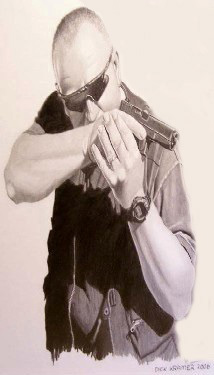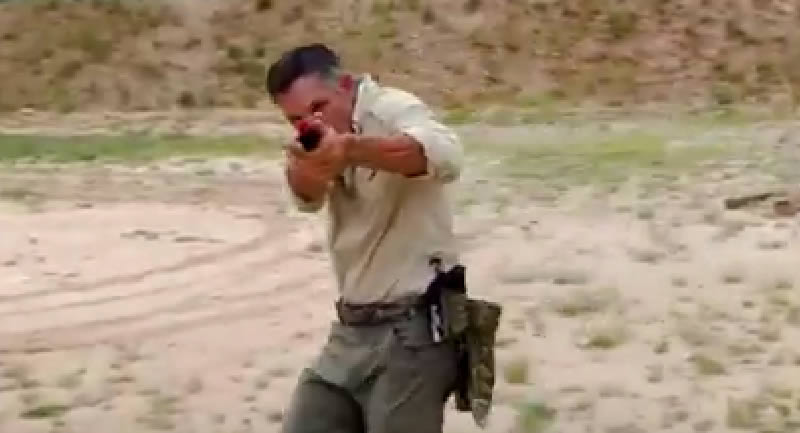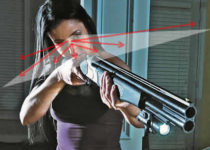
Center Axis Relock

Center Axis Relock (CAR) is a shooting technique that was developed by Paul Castle, a renowned British firearms expert and self-defense instructor. This technique was designed to provide improved accuracy and quick target acquisition, particularly in close-quarters combat situations.
One of the primary benefits of CAR is its ability to maintain situational awareness while shooting. By holding the firearm close to the body, the shooter can keep both eyes open and scan the surroundings for potential threats. This is especially useful in situations where the shooter needs to engage multiple targets or assess the environment for potential cover or escape routes.
CAR involves holding the firearm in a high, close-to-the-body position, with the centerline of the firearm aligned with the shooter’s nose and dominant eye. The support hand is placed on the bottom of the firearm, with the thumb pressing against the base of the trigger guard. The dominant hand is placed on top of the firearm, with the thumb wrapped around the back of the slide.
The CAR technique is highly versatile and can be adapted to different shooting scenarios. The high, close-to-the-body grip allows for quick transitions between targets, and the shooter can easily switch from a two-handed grip to a one-handed grip if necessary. The technique works well with a variety of firearms, including pistols, rifles, and shotguns.
Castle developed the CAR technique through years of experience in the firearms industry, including extensive training with law enforcement and military personnel. His innovative approach to self-defense and firearms training made him one of the foremost experts in the field.
Despite its effectiveness, CAR has faced criticism from some shooters who argue that the technique is too specialized and may not be suitable for all shooting scenarios. Others argue that the high grip position can limit visibility and make it harder to shoot accurately at longer ranges.
Critics of CAR suggest that the technique requires a high degree of training and practice to master. Some shooters may find it difficult to transition from other shooting techniques to CAR. Additionally, the technique may be less effective in shooting scenarios that require a greater degree of mobility or stability, such as shooting from a prone position or from a moving vehicle.
Despite these criticisms, the CAR technique remains popular among self-defense and firearms enthusiasts. Many shooters find that it improves their accuracy and control, especially in dynamic shooting scenarios. Castle’s legacy as a firearms expert and self-defense instructor continues to inspire new generations of shooters to explore innovative techniques and approaches to firearms training.
In recent years, some firearms instructors have developed variations of the CAR technique that incorporate elements of other shooting techniques. For example, some instructors have developed a modified CAR technique that incorporates elements of the Isosceles stance, which emphasizes a squared-off body position and a two-handed grip. These variations of the CAR technique are designed to address some of the criticisms of the original technique while maintaining its core principles of accuracy, stability, and situational awareness.
For example in this video below from Elite You, Retired Green Beret Jack Nevils demonstrated the basics of moving a pistol around the body from left to right. While the video did not cover the CAR technique, it did provide an in-depth explanation of the most efficient way to transition the pistol when targeting to the left or right. Nevils demonstrated this technique with precision and accuracy, emphasizing the importance of proper pistol movement and situational awareness. While the CAR transition only takes place in a millisecond, it remains a valuable tool for close-quarters combat and self-defense situations. Have a look at the video:
Final thoughts, the Center Axis Relock technique developed by Paul Castle is a shooting technique that emphasizes accuracy, stability, and situational awareness. While it has faced criticism from some shooters, it remains popular among small groups of firearms enthusiasts and self-defense practitioners. Castle’s legacy continues to inspire new generations of shooters to explore innovative techniques and approaches to firearms training, ensuring that the CAR technique will continue to evolve and adapt to meet the changing needs of shooters and self-defense practitioners.
Source: Sabre Tactical, Youtube




